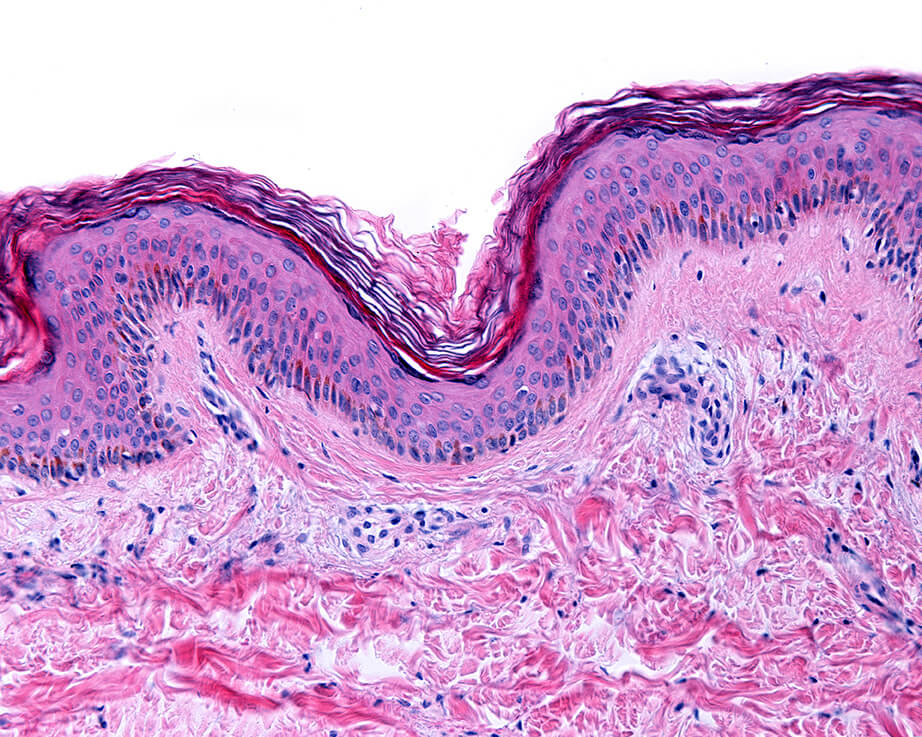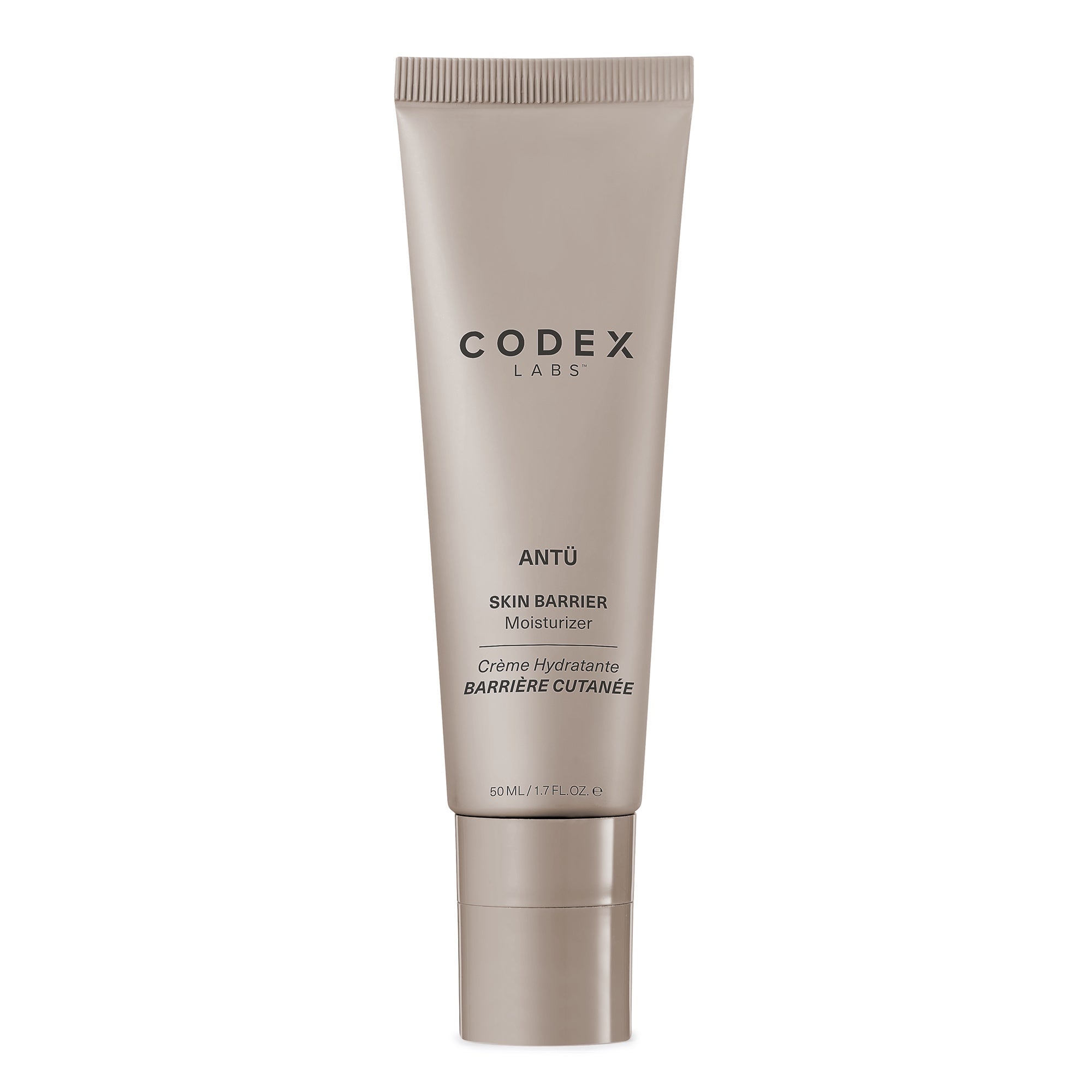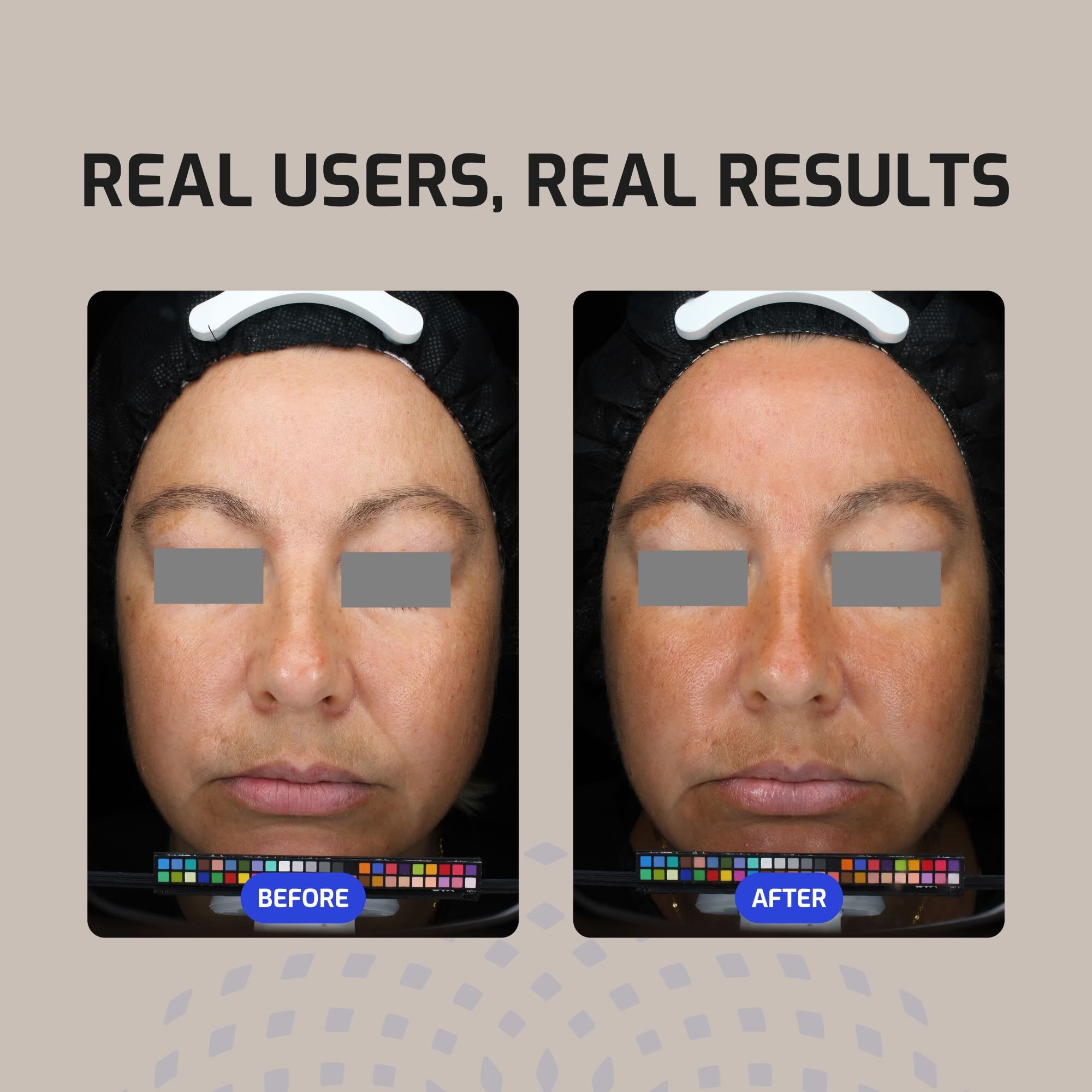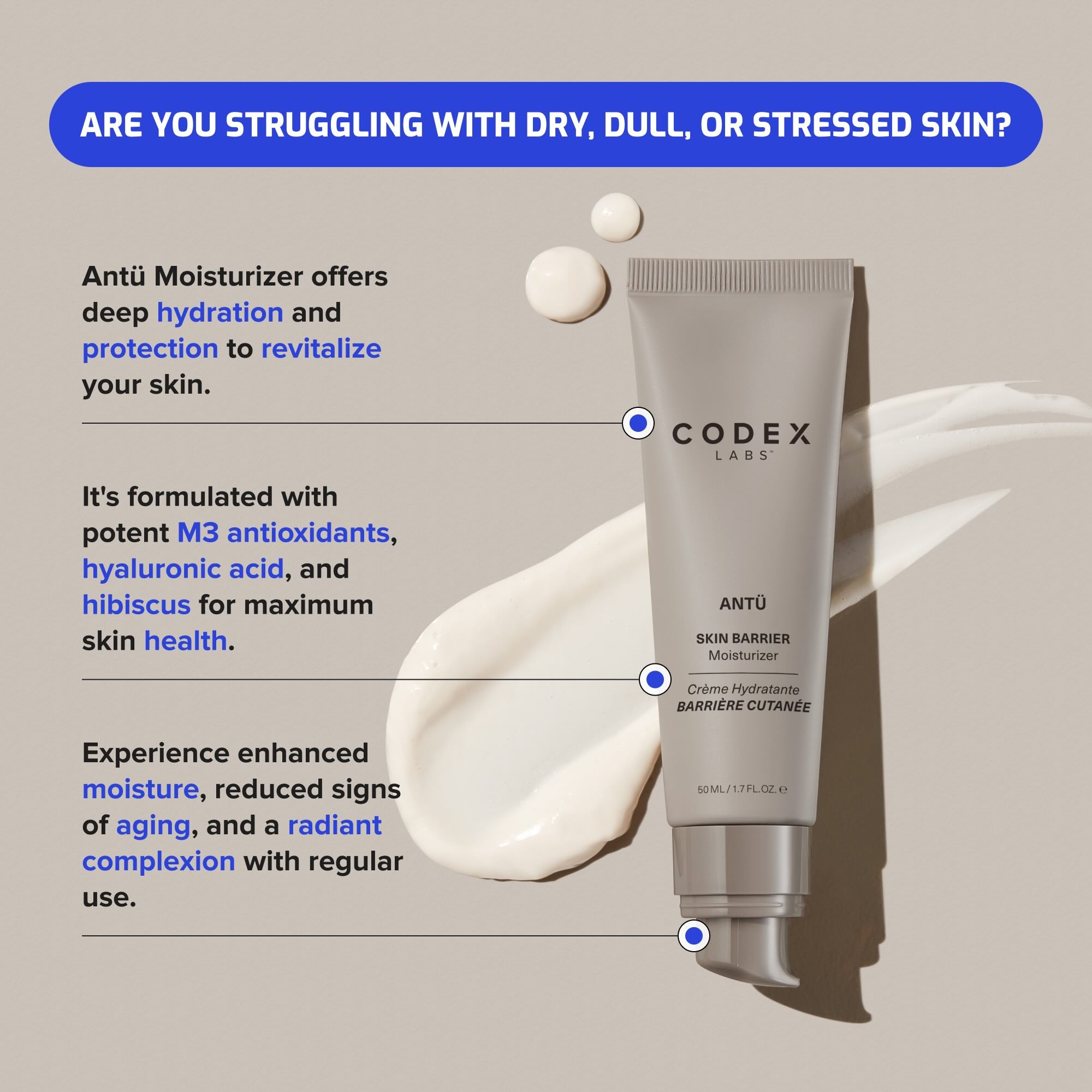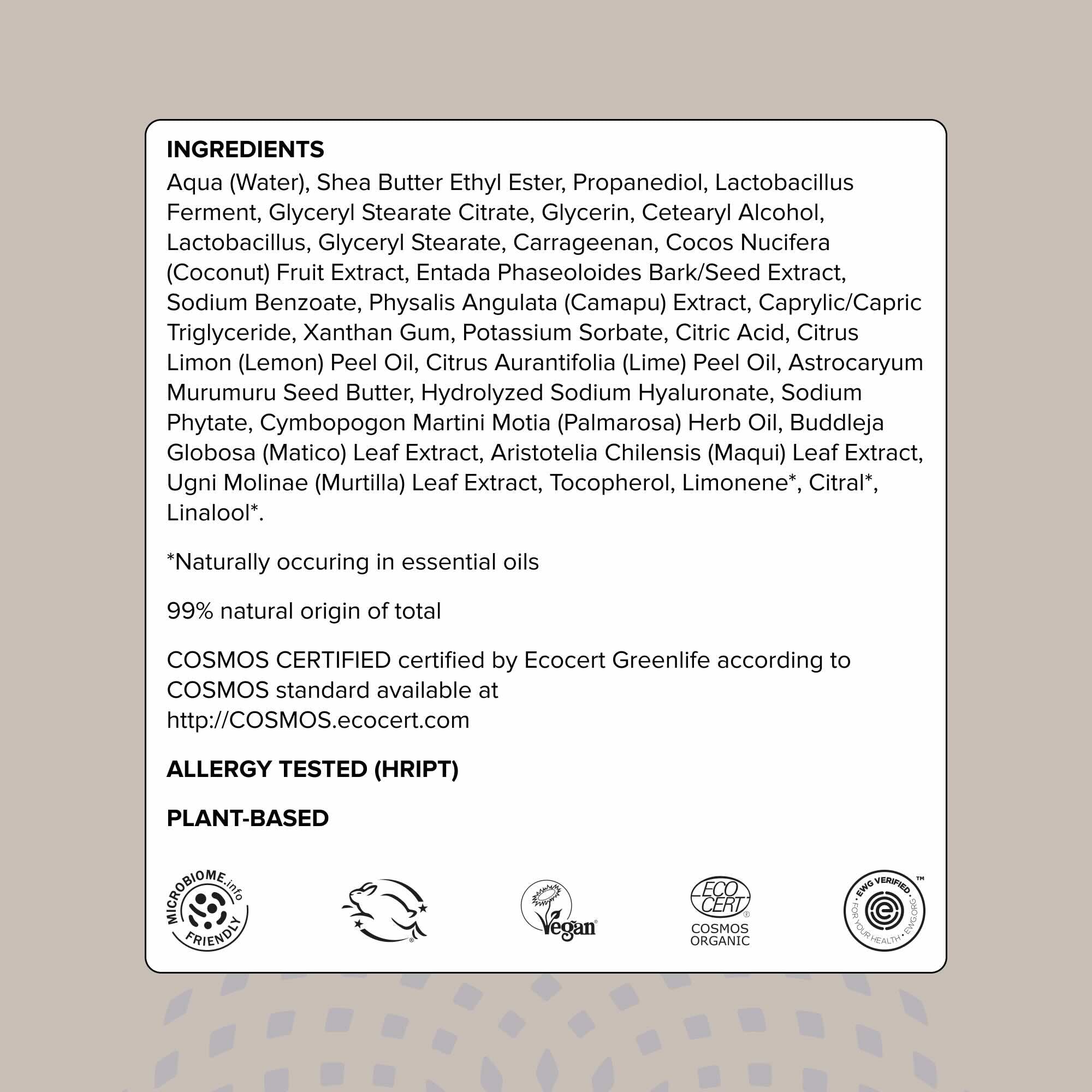Welcome to our comprehensive guide on understanding and repairing a damaged skin barrier. Your skin barrier is vital for maintaining healthy, radiant skin. It acts as a protective shield, preventing harmful substances from entering your body, while simultaneously locking moisture in your skin to keep it hydrated.
Unfortunately, various factors can compromise the skin barrier and trigger various types of unwanted skin conditions. In this guide we will explore the signs and symptoms of a compromised skin barrier, how to heal a damaged skin barrier, and steps that can be taken to prevent further damage. Whether you’re dealing with skin dryness, sensitivity, and/or other skin concerns, this guide will help you to restore and maintain a strong, resilient, and properly functioning skin barrier.
What causes skin barrier damage? [1]
There are numerous ways in which a person can experience a damaged skin barrier. They include the following:
- Excessive use of alkaline (high pH) skin cleansers that rely on harsh chemicals like sulfates to remove oily dirt, makeup, and grime.
- Regular use of too many skincare products. Bombarding skin with massive quantities of different skincare ingredients can, over time, lead to skin barrier damage. When it comes to skin health, less is more!
- Over exfoliating your skin with abrasive particles and chemicals often also leads to a damaged skin barrier.
- Environmental pollutants together with unprotected sun exposure trigger formation of free radicals which wreak havoc on the skin resulting in a compromised skin barrier.
- Inflammation triggered by lack of sleep, stress, aging, and hormonal changes represent additional causes of skin barrier damage.
Any one, or more, of these can lead to a compromised skin barrier!

How can you tell if you have a damaged skin barrier? [2]
Your skin, like your body in general, lets you know when it’s not feeling well. There are various signs it provides to let you know something is not right, particularly when it comes to the well-being of your skin barrier. The tell-tale signs typically include:
- Dryness and Tightness: If your skin feels dry and tight (particularly during the cold winter months), almost like it's too small to comfortably fit your face or body, it most likely means that your skin barrier is dehydrated, i.e., has an insufficient amount of moisture.
- Flakiness or Roughness: If you notice small flakes or rough patches on your skin, an indication that your skin is neither smooth nor intact (a sign of dehydration), it’s most likely caused by a damaged skin barrier.
- Increased Sensitivity: If you notice that your skin seems to be more sensitive than usual, this too can be a sign of skin barrier damage. Your skin could sting, itch, or become red more easily, especially when you use certain types of skincare products that don’t typically cause such sensations or if you use things like soap to wash your skin.
- Skin Neither Looks nor Feels Happy: Your skin may not look or feel as healthy as it usually does. For example, it might look dull or feel less flexible/springy, like its lost its glow and suppleness.
- Breakouts or Irritation: Sometimes, if you have a damaged skin barrier, you may notice more pimples, rashes, or other signs of irritation, especially if you happen to inherently suffer from eczema or psoriasis. It’s like your skin’s protective shield isn’t strong enough to protect your skin from these types of skin conditions.
Just like when your body lets you know when you’re hungry or tired, your skin also sends signals when it suffers from skin barrier damage. So, if your skin feels unusually dry/tight, looks flaky, gets easily irritated, or just doesn’t seem as healthy as usual, it most likely is telling you that you have a damaged skin barrier that needs attention and care.
How do you fix damaged skin barrier? [3]
Fortunately, a compromised skin barrier can be repaired so long as certain steps are taken to heal a damaged skin barrier. Aside from scaling back, if not temporarily discontinuing completely, the use of all products containing harsh/skin sensitizing ingredients which will only further aggravate a currently damaged skin barrier, moisture (water) MUST be replenished and sealed within the compromised skin barrier.
While drinking plenty of water to moisturize dehydrated skin from the inside-out should absolutely be practiced on a daily basis; in addition, there are certain types of ingredients that can be applied externally on the skin surface to further aid in the rehydration process to help repair a damaged skin barrier. The most commonly used skin rehydrating ingredient is a humectant which has the ability to attract water present in the air (humidity) into the skin similar to a magnet (humectant) attracting a piece of metal (water). Examples of highly effective humectants include hyaluronic acid and glycerin.
Once moisture (water) has been pulled into the skin, it must then be locked/sealed therein to make sure it doesn’t rapidly evaporate from the skin surface. The most commonly used moisture sealing ingredient is known as an emollient which is a wax-like substance (think of an emollient as saran wrap for sealing water in your skin). The emollient covers the skin surface and sinks into the gaps between the skin cells to not only stop moisture from evaporating, but it also creates a smooth layer on the skin surface to help reduce flaking and cracking.
Next, because a damaged skin barrier inevitably causes some degree of skin inflammation due to the skin barrier’s inability to keep moisture in and, consequently, pathogens out, it is critically important to address inflammation ASAP! Because unaddressed inflammation leads to the formation of free radicals (a.k.a. reactive oxygen species) which further damage the skin barrier by exposing it to oxidative stress, the timely neutralization of free radicals is of utmost importance. The way to do so is by using powerful antioxidants which, once applied onto the skin surface, immediately begin to neutralize any free radicals they come into contact with, thereby helping your compromised skin barrier to repair itself.
How long does skin barrier damage take to heal?
Inquiries relating to how to fix damaged skin barrier or how to heal damaged skin barrier are becoming more prevalent as people are becoming better educated on the importance of a properly functioning skin barrier for overall skin health and appearance. Repairing a damaged skin barrier is, unfortunately, not an instant fix, but rather, a process that takes time and consistency. The exact duration can vary from person to person and depends on such factors as the degree of damage, a person's individual skin characteristics, and the effectiveness of the chosen skincare routine. A good general rule of thumb regarding the amount of time skin barrier damage takes to heal is as follows:
- Minor damage typically takes from a few days to weeks: If the damage is minor, similar to having a few small cracks in the walls of your house, your skin may start to improve within a few days to a couple of weeks. Using gentle products and avoiding irritants can speed up the healing process.
- Moderate damage requires several weeks: For more substantial skin barrier damage, it might take several weeks for your compromised skin barrier to experience noticeable improvement. Consistency in your skincare routine is key to healing a damaged skin barrier.
- Severe damage can take months: If the skin barrier damage is more severe, imagine a wall in your house so damaged that it is getting ready to collapse, it could take months of consistent care for your skin barrier to fully recover. This will typically involve the use of a more intensive skincare routine, and of course, a lot of patience.
Keep in mind that just like a plant needs time to grow, your skin needs time to renew itself. Skin cells go through a natural replenishment cycle which plays a role in skin barrier healing. When it comes to the question of how to fix a damaged skin barrier, the repair process is not just about fixing the visible damage, but about strengthening the skin barrier’s invisible overall structure as well.
If a damaged skin barrier is your problem, Codex Labs has your solution!
Codex Labs offers a range of clinically proven skincare solutions specifically designed to help repair and maintain a healthy, properly functioning skin barrier. The Codex Labs ANTU® COLLECTION, with its patented AntuComplex® technology, is a collection of scientifically-proven products that help to repair and protect the skin barrier, soothe irritation, and combat inflammation-causing oxidative stress. Examples of a few products you may want to include in your skin barrier repair tool kit include:
- The first step on the road to not only repairing a damaged skin barrier, but keeping it healthy afterwards, is to stop using cleansers containing harsh ingredients which can strip moisture from your already dehydrated skin. The BIA® GENTLE CLEANSING OIL 2.0 was specifically designed to gently cleanse and soothe your skin without drying it out, leaving your skin barrier purified and refreshed.
- The next step is to rehydrate the skin barrier by using a moisturizer that not only brings much needed moisture to your parched skin barrier, but then locks it in. For this, the ANTU® SKIN BARRIER MOISTURIZER is just what your skin barrier has been waiting for. An all-in-one workhorse of a moisturizer that not only re-hydrates your skin barrier, BUT ALSO protects it from inflammation-triggering oxidative stress by neutralizing free radicals present on the skin and blocking environmental pollutants from contacting it thanks to its patented AntuComplex® technology.
- For those in search, and need, of a clinically proven powerhouse skin barrier repair and maintenance product, who choose to spend their hard-earned money on products backed by scientific data rather than marketing blah-blah, the ANTU® SKIN BARRIER SERUM is just what the doctor ordered! This award-winning product, jam packed with Mother Nature’s plant-based active ingredients, not only infuses your skin with much needed moisture and potent free-radical neutralizing antioxidants from the Patagonian region of Chile but does so in a way that supports your skin’s natural microbiome to promote overall skin barrier health.
- You will recall that in order to maximize and accelerate the skin barrier healing process, it’s important to be vigilant and consistent with your skincare routine. Hence, prior to going to bed at night, take your skin barrier treatment and maintenance regimen to the next level with the ANTU® SKIN BARRIER NIGHT CREAM, a truly rich and decadent nourishing cream that replenishes your skin barrier and locks in moisture, all while you sleep.
- For those wanting to really turbo-charge the skin barrier healing and maintenance process by also tackling this issue from inside their body, the ANTU® SKIN BARRIER SUPPORT SUPPLEMENT is just the ticket. With its potent anti-inflammatory blend of Patagonian plant-derived antioxidants and L-histidine, an amino acid shown to support skin barrier strength and moisture retention, this delicious dietary supplement meant to be taken daily will help to address a damaged skin barrier from the inside-out.
- Lastly, and because biotech is a part of our DNA, there are diagnostic at-home tools that can be used to gain a better understanding of a person’s skin health. Since knowledge is power, knowing what your skin’s strengths and weaknesses are (biologically speaking) will help you to develop a personalized skincare routine to make sure it looks and feels its best. The DECODE.MYSKIN DNA TEST is a quick and easy way to unlock valuable information concerning your skin through its DNA. Once the data has been compiled, a genetic counselor will go over the results with you and make personalized recommendations that will help you realize your skin’s max potential.
Conclusion
Understanding and repairing a damaged skin barrier is essential for maintaining healthy, beautiful looking skin. By recognizing the signs and symptoms of a damaged skin barrier, you can take the necessary steps to restore and strengthen it. Developing a personalized daily skincare routine that focuses on nourishing and protecting your skin barrier is critically important for long-term skin health. Remember, healthy looking skin starts with a healthy skin barrier, so be sure to prioritize its care so you can enjoy the benefits of radiant, glowing skin.
References:

